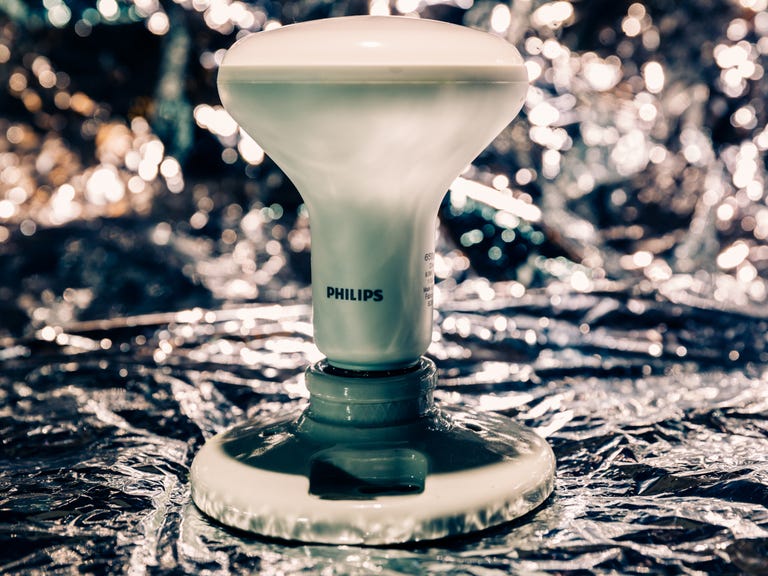 Why You Can Trust CNET
Why You Can Trust CNET Philips BR30 LED Floodlight (2017) review: Philips' newest LED floodlight is a bargain bulb worth buying
Philips' newest LED floodlight is easy to afford, and it comes with relatively few tradeoffs.
Philips is one of the biggest names in lighting, and you'll notice as much as you stroll down the lighting aisle at Home Depot, where it sells a wide variety of light bulbs. That includes the newest dimmable version of the BR30-shaped Philips LED floodlight, which sells in a three-pack for $15. At just $5 per bulb -- or two dollars less than what you'll earn back in energy savings after using one instead of an incandescent for a year -- it's one of the cheapest dimmable LED floodlights you'll find. That led me to ask what the tradeoffs were for such a low-cost lighting upgrade, but after testing it out, I'm convinced that Philips largely got the big things right.
The Good
The Bad
The Bottom Line
First is efficiency. With a power draw of 9 watts and a measured light output of 639 lumens, you're looking at a bulb that yields just over 70 lumens per watt. Higher-end options like the Cree LED floodlight can get you up above 80, but for a bargain-priced bulb like this one, anything above 70 is perfectly fine.
As for brightness, those 639 lumens fall just shy of the stated 650 lumens (a number that's a pretty common benchmark for a 65W replacement floodlight LED like this one). 639 is within the margin of error of our test setup, though, and not noticeably dimmer than the competition. I'd be less forgiving if that number fell below 600, but 639 is plenty bright for most household lighting setups.
The Philips floodlight is also a good pick if you use dimmer switches in your home, particularly newer ones designed to work with LEDs. I tested it on a couple of switches like that, and was impressed with how I was always able to dim smoothly down below 1 percent brightness without any noticeable flicker or buzz. The bulb wouldn't go higher than a maximum setting of 90 percent on one Lutron switch, and I saw a very faint flicker at the lowest setting of an old, outdated rotary dial, but overall, I give the dimming performance a big thumbs up.
The Philips LED (red) was just so-so in this test, where we look at how much brightness the bulb loses as it heats up. For that reason, a Cree or GE bulb would be a better pick for enclosed fixtures that trap heat.
I'm less enthused about how the bulb handles heat, though. Like most electronics, LED light bulbs will see their performance -- namely, their brightness -- decline as they heat up. After about thirty minutes of use, the bulb's heat sinks or convection vents should be able to stabilize things. Higher quality bulbs will stabilize quickly, and with less loss of their initial brightness, but the Philips floodlight fell more than fifteen percent before stabilizing. That's not damning, and not surprising for a bulb that's designed to be as cheap as this one, but I'd still go with something else for use in an enclosed fixture, where heat gets trapped.
Still, none of those tradeoffs are significant enough to spoil this five-buck bulb's appeal. If you need new lights and you want to spend as little as possible without regretting it, then the Philips floodlight LED would be an excellent choice. For more details, check out my full rundown of your LED floodlight options.


